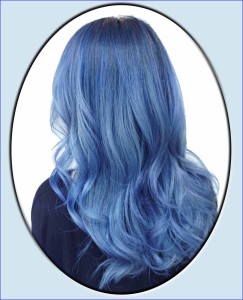 Contact Dermatitis. 2016 Oct;75(4): 258-9
Contact Dermatitis. 2016 Oct;75(4): 258-9
This is a case report about a 45-year-old woman who began to dye her hair blue. After several years of rashes and itching on her scalp, face, and neck, she sought help from an allergist. She was not able to tell the doctor what kind of blue hair dye had been used because she had gone to a number of different salons, so the doctors did some sleuthing and by patch-testing they found that she was not allergic to p-phenylenediamine — the dye most often causing allergies — or to any of the other commonly suspected ingredients. She did, however, test allergic to Disperse Blue 106, a less well-known dye used in textiles and which may not be identified by name on hair dye products.
QUOTE: “In conclusion, Disperse Blue 106 has been well described in textile-related contact dermatitis, but should probably also be considered in the setting of blue hair dyes.”
NOTE: In this case, although the patient was instructed to avoid all products with blue dye, she apparently prefers an itchy scalp to a change in hair color. Well, like my mom always said, sometimes you can lead a horse to water, but you can’t make him drink.
MedLine || Full Text || Get Password




















